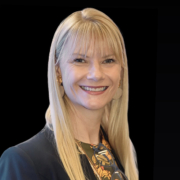Making accurate science stick: Combating burnout and bad information
By Michelle Bridenbaker, Unbiased Science
No one has time these days. Not even when it concerns matters of health. Healthcare professionals are on their knees, barely able to eat or sleep due to their impossible schedules, let alone keep pace with the latest breakthrough in human medicine. The public at large, meanwhile, has become anxious and frenzied – simultaneously addicted to doomscrolling but lacking the headspace to identify and distil credible health science. Across all demographics, people are overwhelmed with conflicting opinions, unable to see clearly amid the oceans of disinformation flooding social media (health “influencers” have a lot to answer for).
So when there are exciting new discoveries or therapies whose benefits need to be communicated – addressing unmet needs; protecting against disease; transforming quality of life – what can their developers and distributors do to ensure they are heard; that they succeed in delivering the facts to the audiences that need to learn them? Effectively delivering targeted and credible messaging that hits its mark is by no means easy in this “attention economy” where an audience’s attention is so hard won, and must be earned. This is as much science, as art.
“Omnichannel” communications strategies for their own sake have been something of a distraction, as communicators have sought to reach their target audience using the full range of available modes of delivery and formats (published report, physical brochure, TV ad, email, online, social media, graphics, animation, audio, video, etc). Often the messaging is poorly joined up, and little or no thought has been given to meeting healthcare professionals, or patients and carers, where they are – with the right kind of content, delivered in the right way (digestible, accessible, educational, and evidence based) for the channel and purpose.
Modern strategies require a far greater responsiveness than advanced annual planning allows, too. When new life science topics or public health issues suddenly come to the fore, hitting the headlines or going viral online, pharma communicators need to be ready to address them head on, supported by credible science “to go” – which they can convey swiftly and appropriately in a form and through channels where it will reach and resonate with the given audience.
Understanding where audiences go
Mistrust around health information isn’t only rife among patients and the general public. A recent study of HCPs in the UK, United States, and France, found that as many as 80 percent lacked trust in pharma – a skepticism that runs deep, clouds digital interactions, and ultimately impacts behavior and engagement with pharma, both online and offline. At the same time, healthcare practitioners are woefully overstretched, to the point that they have very little headspace to engage with unscheduled learning. This means that new or updated messaging has to be strong, credible, relevant, and readily consumable – something they can take in during fleeting downtime.
Selective, careful use of social media, as well as appropriate, respected online forums and educational sources can be very effective in such circumstances. Examples of trusted resources include Medscape, PubMed, the National Institutes of Health (NIH), and the World Health Organization (WHO). Other sources include the American Medical Association, UpToDate, ClinicalKey; and MedicineNet.
Groups like phactMI, and MILE, which are working together across and within industry to set standards, are finding a way to work collaboratively to facilitate and accelerate the access of HCPs (and even patients) to robust and factual medical information created within this industry. One such project is discussed here. Working together has proven typically to be more successful than taking a “lone wolf” approach.
Another means of effective communication in the future will be to partner with trusted third-party sites – often called “earned” channels – too. These are channels that are not directly controlled, but are rather earned through endorsement (for instance mentions/articles on social media, reviews, and media coverage). Although the temptation to tightly control messaging is strong, pharma communicators should see this category as an important opportunity for additional engagement (augmentation) in the interests of fulfilling customer needs around the clock, 365 days a year.
Let the facts speak: data will show the way
Understanding what effective engagement means in 2025 must be the next priority. What is it, specifically, that physicians, or patients, need in this moment/in response to X event/or through this particular forum? Why have they turned to this medium specifically? What is it that they are seeking, and why?
Something that digital channels do very well is track traffic and activity in great detail. This is invaluable data for communicators striving to understand which type of content and messaging it most valued, and in what form, guiding and empowering them as they strive to create and deliver more of what works.
Striking the right balance: provide only what is needed
Given the oceans of conflicting information now inundating both physicians and patients, the goal for pharma communicators in 2025 must be good, authoritative, and reliable content that is delivered conveniently and concisely.
Depending on the context, the available content, the identified audience and its immediate needs, the optimum choice could be a well-constructed infographic; a lively podcast roundtable featuring vetted expects; or for busy clinicians an evidence-based scientific summary; or a roundup of peer perspectives. Even WHO is putting out guidance now, to help HCPs determine where to look for the latest, trusted information, guidance that all pharma communicators should be on top of.
Cultural and organizational considerations
So how can communications professionals best incorporate this updated thinking, and become more adaptable and agile in their execution? Certainly, strategies and campaigns need to transcend individual functions now, which in turn invites an internal review organizationally. (Audiences do not care whether the information they are consuming has been collated by medical affairs or commercial teams; they simply expect that messaging is consistent, robust, scientifically balanced and digestible, and that it does the job required of it.)
Some upskilling will be necessary, too. In the 2020s, there needs to be a good overview and discrete knowledge of social media and its intricacies, how to monitor and optimize those channels’ impact, as more technically how to harness artificial intelligence (AI) capabilities to drive innovation and dynamism. That could be by doing a lot of the routine admin and data crunching, freeing up more time for teams to be creative, for instance; and/or by quickly identifying when and in what ways to pivot strategies toward the campaigns, formats, and delivery routes that are proving particularly impactful.
If the message is important, it is absolutely worth getting the delivery right.

Michelle Bridenbaker, RN, BSN, MS, MBA, is COO of Unbiased Science, a Vital Statistics Consulting company. She has extensive experience in digitally transforming aspects of medical/scientific affairs, health communication, and multichannel engagement across industry and healthcare. She is also VP-elect of MILE Association (Medical Information Leaders in Europe).
